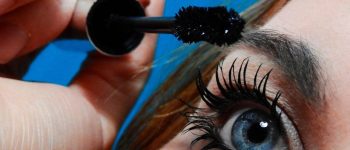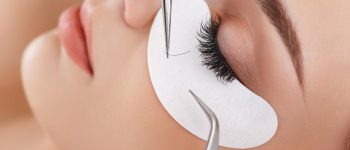Begonia eyelash is a truly fascinating plant that is sure to catch your attention. Unlike ordinary green-leaved houseplants, this plant stands out with its unconventional foliage. If you want to unleash the full potential of this remarkable plant, then you’ve come to the right place. In this comprehensive guide, we will provide you with all the tips and tricks you need to grow and care for your begonia eyelash.
What is Begonia Eyelash?
Begonia eyelash is an evergreen perennial plant that boasts a one-of-a-kind growth habit and striking foliage. The leaves of this plant are brown-red in color with bright green outlines, giving them a unique pattern. What truly sets them apart is the presence of hair-like structures that outline each leaf, hence the name ‘eyelash’.
Begonia Eyelash Care
To ensure that your eyelash begonia thrives in your home, it requires proper care and attention. Here are some key care tips that you need to keep in mind.
Light Requirements
The begonia eyelash plant prefers partial or shaded light. Direct sunlight can cause the leaves to lose their markings and eventually turn yellow or brown, especially when grown outdoors. For indoor plants, placing them near an east, west, or south-facing window that receives some direct light for a few hours is ideal. Just remember to use a curtain to filter the sunlight, especially if the window faces south. In situations where natural light is limited, you can opt to install two to three overhead LED grow lights. This will provide your plant with the necessary light it needs to thrive.
Water Requirements
Eyelash begonias prefer moist soil, but be careful not to overwater them. Water your plant when the top two to three inches of soil are dry. You can simply check by inserting your finger into the soil up to the knuckle. Watering should be done directly at the soil, avoiding any water splashes on the stems and foliage. During the summer, you may need to water more frequently. It’s also important to ensure good drainage in the soil, as the plant can be sensitive to excessive water. Regularly check the drainage holes in the container and clear any blockages if necessary.
Soil Requirements
Eyelash begonias thrive in airy and loose soil. To achieve this, create a soilless mixture using equal parts of peat, perlite, and vermiculite. Thoroughly mix them together, add water to moisten the mixture, and fill a suitable-sized container with it. Adding two to three tablespoons of lime can help adjust the pH and control humidity. For optimal air circulation, it’s recommended to use a plain old clay pot.
Temperature Requirements
Eyelash begonias prefer temperatures between 66 to 75 degrees Fahrenheit for optimal growth. They thrive during the spring and late summer seasons. Avoid exposing them to temperatures below 60 degrees and cold air drafts, as it can cause leaf drop and frost shock. It’s advisable to move the plants indoors during the winter months to protect them from harsh conditions.
Humidity Requirements
Eyelash begonias prefer high humidity levels of 70 to 90 percent, especially during their active growth period. If you live in a dry area, you may need to artificially increase the humidity around your plant. Using a pebble tray or misting the plant three to four times a week can help create the desired humidity levels. Another option is to invest in a good quality humidifier specifically designed for plants.
Fertilizing Requirements
To ensure your begonia keeps producing beautiful flowers, it needs regular feeding. A slow-release, well-balanced fertilizer with an NPK ratio of 10:10:10 is recommended. This will provide your plant with essential nutrients as well as some non-essential ones. Slow-release fertilizers in powdered pellet form can be mixed into the top few inches of soil. Liquid fertilizers can also be used for instant boosts, but make sure to dilute them properly to avoid fertilizer burns.
Pruning
Pruning is not a necessity for eyelash begonias, but removing old, dehydrated, and discolored leaves can help maintain the plant’s overall health and appearance. Avoid letting fallen leaves collect on the soil surface, as they can attract pests and promote disease. Pruning the tips of branches in spring can encourage new growth.
Propagation
Propagating begonia eyelash is a straightforward process that won’t take up much of your time. If you’re too busy to perform rhizome propagation, you can easily propagate the plant using its leaves. Here’s how you can do it:
- Remove the leaves from the plant, including their petioles.
- You can either use whole leaves or cut them into several parts, making sure each part has its own vein.
- Prepare a mixture of peat, vermiculite, and moss in a tray.
- Gently press the leaves into the mixture, keeping them near the surface.
- Place the tray in a transparent shopping bag to create a humid environment, and keep the soil moist.
- Put the bag in a warm and indirectly bright spot.
- In three to eight weeks, new plants will start to grow.
- Transplant each plant into a separate pot by the sixth or eighth week.
Problems
While begonia eyelash is a relatively low-maintenance plant, it may face a few issues that need addressing. Here are a couple of common problems and their solutions:
Botrytis Blight
Eyelash begonias are particularly susceptible to botrytis blight, a fungal disease caused by common soil fungi. It thrives in high humidity and poor air circulation conditions. To treat botrytis blight, prune off all the blackened and rotten parts of the plant. Bury them in the ground as infectious waste. You can also use a good fungicide to treat the remaining areas.
Toxicity for Cats and Dogs
Keep in mind that begonia eyelash is toxic to cats and dogs. If your pets happen to chew any part of the plant, it can lead to severe vomiting. If you suspect your pet has ingested begonia eyelash, it’s best to consult a veterinarian immediately.
FAQ
Q: Does Begonia Eyelash like sun or shade?
A: Begonia Eyelash prefers partial shade to protect its delicate foliage from direct sunlight.
Q: How do you prune leggy Begonia Eyelash?
A: To prune leggy Begonia Eyelash, trim back excessively long stems to promote bushier growth and maintain a compact shape.
Q: How Do You Propagate Begonia Eyelash Through Rhizome Division?
A: When repotting the plant, separate a few rhizomes and use them to propagate a whole new plant. Wash the roots gently and cut one to two rhizomes using a sterile pruning knife. Prepare sterile potting soil in a small pot and place the rhizomes inside. Keep the pot in a warm and humid spot, and your new plant will grow and thrive within a few weeks.
Conclusion
Now that you have all the information you need, why not bring the beauty of the begonia eyelash into your home? With proper care and attention, this unique plant will reward you with its stunning foliage and vibrant growth. Don’t hesitate, start your begonia eyelash journey today. And remember, for all your gardening needs, visit Ekilove. Happy gardening!




